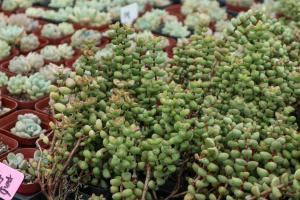How Long Do Biodegradable Plant Pots Last?
Biodegradable plant pots have become increasingly popular in recent years, as more and more people are looking for eco-friendly alternatives to plastic. These plant pots are made from a variety of materials, including peat moss, coconut coir, rice husks, and even corn starch. They are designed to naturally break down in the soil over time, leaving no harmful residue behind.
The Lifespan of Biodegradable Plant Pots
While biodegradable plant pots are designed to break down over time, the lifespan of these pots can vary depending on the material they are made from and the environmental conditions in which they are used. Typically, biodegradable plant pots will last anywhere from six months to one year before they begin to break down. However, some pots may last longer under certain conditions.
Factors That Can Affect the Lifespan of Biodegradable Plant Pots
There are several factors that can affect the lifespan of biodegradable plant pots, including:
Moisture: Biodegradable plant pots require moisture to break down properly. If they are used in very dry conditions, they may last longer than if they are used in wet conditions.
Temperature: High temperatures can speed up the breakdown process, while cooler temperatures can slow it down.
Microbes: Bacteria and fungi in the soil break down the plant pots over time. The presence of these microbes can speed up or slow down the breakdown process.
Disposing of Biodegradable Plant Pots
When your biodegradable plant pots have reached the end of their lifespan, you can dispose of them by simply planting them in the ground. The pots will break down over time, adding nutrients to the soil and creating a healthy environment for your plants to grow. However, it is important to note that not all biodegradable plant pots will break down at the same rate, so it is important to choose pots made from materials that are appropriate for your specific needs.
The Environmental Benefits of Biodegradable Plant Pots
Biodegradable plant pots offer several environmental benefits over traditional plastic pots. When they break down, they release valuable nutrients into the soil, improving the health of your garden. They also reduce the amount of plastic waste that ends up in landfills, helping to protect the environment. Finally, because they are made from natural materials, they have a much lower carbon footprint than plastic pots.
Conclusion
Biodegradable plant pots are a great eco-friendly alternative to traditional plastic pots. Although the lifespan of these pots can vary depending on the materials they are made from and the environmental conditions in which they are used, they generally last anywhere from six months to one year. When they have reached the end of their lifespan, they can be planted in the ground to break down naturally, adding nutrients to the soil and creating a healthy environment for your plants to grow.

 how many times do yo...
how many times do yo... how many planted tre...
how many planted tre... how many pine trees ...
how many pine trees ... how many pecan trees...
how many pecan trees... how many plants comp...
how many plants comp... how many plants can ...
how many plants can ... how many plants and ...
how many plants and ... how many pepper plan...
how many pepper plan...































